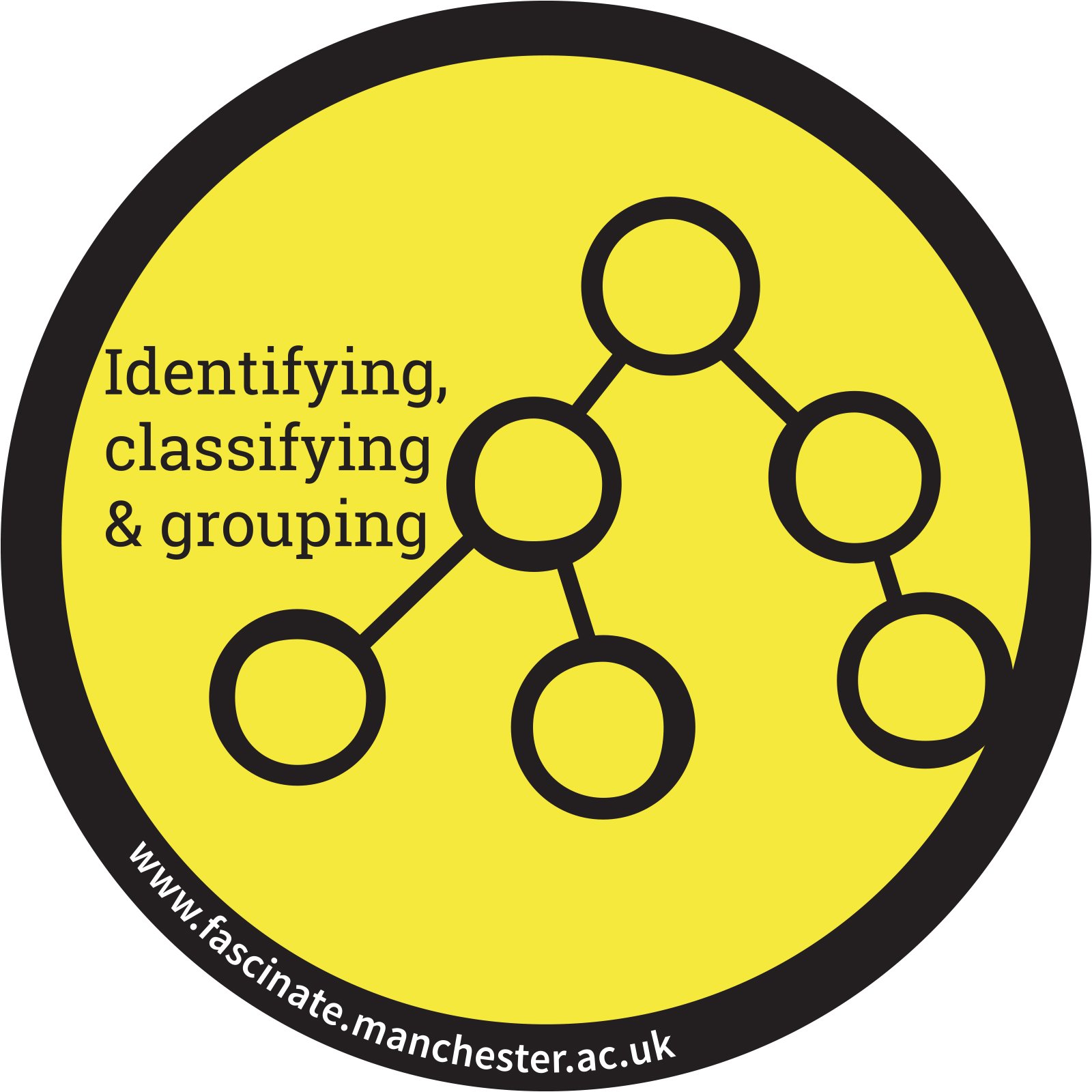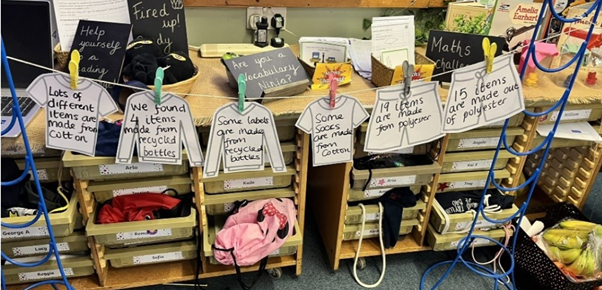Questions about how clothes were made from plastic bottles arose when pupils were sorting and classifying in the Great Fashion Share.
Pupils at Christ the King RC Primary School couldn’t wait to get stuck in to asking and investigating the scientific question - What are our clothes made from & why?
This enquiry, designed for 5-7 year olds enhances understanding about what we wear by the simple exploration of washing labels. It’s something everyone has got so is an inclusive way to encourage all pupils to gather and interpret evidence. The lost property box was a rich source of resources for this enquiry as well as clothes pupils wished to bring in from home.
Focusing on the word ‘fabric’ guided the pupils to really consider the range of clothes they wear and what they are made from.
Pupils took a big gasp when teacher, Clare, tipped a huge bunch of clothes onto the carpet from a washing basket.
They were enthusiastic and eager to touch and explore the clothes - which after all, are things they wear everyday. On this occasion they seemed somewhat more special - they were sources for data collection.
Jane and Kevin, two Material scientists, introduced the challenge in the direct-to-classroom introductory video. As part of the GSSfS Careers Chats, pupils heard about who they are as people and saw inside their work space in the University.
For more Careers Chats visit: Great Science People
Working scientifically
After working collaboratively to explore all the different ways they could sort the clothes.
Colour, size, indoor/outdoor, light/heavy, rough/smooth had them sorting, sorting and sorting again.
Fabric type was determined by a close look at washing labels where vocabulary about different fabric types began. Clare supported the class to create a class tally chart of results.
Pattern seeking became the next part of the lesson when pupils began to describe what they had found.
“From something so regular as clothes so much learning came!” explained Clare.
With Sustainable Science as the 2024 GSSfS theme, the pupils were delighted to see some of their clothes were made from recycled materials. The ‘Alternative Fabric Cards’ offered pupils key information that led to many finding out something new, and wondering what different clothing options they may one day wear. Pupils talked about jumpers made from Alpaca Fleece and T-shirts made from Bamboo. What if? questions were the talk of the classroom at this point.
“How can that bamboo tree be turned into clothes I can wear!?”
Clare chose the 5-7 years Conclusion Creators from the new Great Science Toolkit to support pupils in summarising their findings. Pupils enjoyed pegging their conclusions on a class washing line for all to see! This visual way to share is valued within any GSSfS activities, as it showed a creative way of sharing ideas to new audiences coming into the classroom.
Been inspired? Do you wish to try out the Great Fashion Share for your #GSSfS2024.
Extend learning for:
7-11 year olds: How does the way different materials break down affect the environment?
11-14 year olds: How reliable is published information about sustainable fashion?
School bursaries of £250 available until end of March 2024 - see home page or click below.
With thanks to Clare and the pupils from Christ the King RC Primary.
Get in touch if you’d like your school to be written about, email greatscishare@manchester.ac.uk








